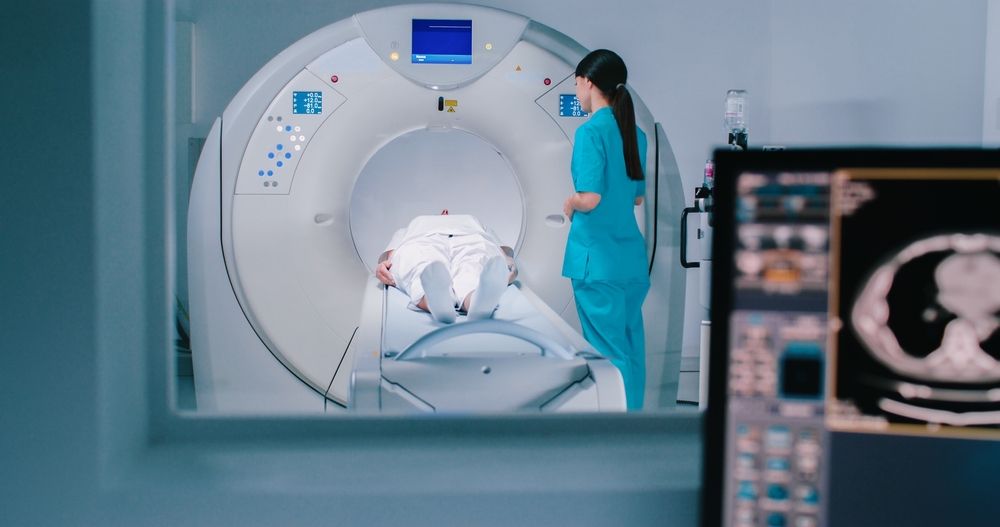Ultrasound scans have become a cornerstone in modern medical diagnostics, offering a non-invasive, safe, and effective way to visualize the inside of the body.
These scans use high-frequency sound waves to create images of organs, tissues, and other structures, providing crucial information that helps in diagnosing and managing various medical conditions.
This comprehensive guide explores the fundamentals of ultrasound scans, their importance, benefits, limitations, and much more.
What Are Ultrasound Scans?
Ultrasound, also known as sonography, is a diagnostic imaging technique that employs high-frequency sound waves to produce images of the internal structures of the body.
These sound waves are emitted from a transducer, which is placed on the skin.
The waves bounce off internal organs and tissues, and the returning echoes are captured to create visual images.
Types of Ultrasound Scans
- Abdominal Ultrasound: Used to examine organs such as the liver, gallbladder, spleen, pancreas, and kidneys.
- Pelvic Ultrasound: Commonly used in gynecology and obstetrics to assess the uterus, ovaries, and fetus during pregnancy.
- Transvaginal Ultrasound: A type of pelvic ultrasound where the transducer is inserted into the vagina for better visualization of the female reproductive organs.
- Echocardiogram: Focuses on the heart, evaluating its structures and function.
- Doppler Ultrasound: Measures blood flow in vessels to detect blockages or clots.
- Musculoskeletal Ultrasound: Evaluates muscles, ligaments, and joints.
The Importance of Ultrasound Scans
Ultrasound scans are indispensable in medical diagnostics for several reasons:
Non-Invasive and Safe
Unlike X-rays and CT scans, ultrasounds do not use ionizing radiation, making them a safer option, especially for pregnant women and developing fetuses. This non-invasive nature means there is no need for surgical incisions or injections, reducing the risk of complications and infections.
Real-Time Imaging
One of the standout features of ultrasound is its ability to provide real-time imaging. This capability is essential for guiding procedures such as needle biopsies and for monitoring fetal development during pregnancy.
Diagnostic Versatility
Ultrasounds are used to diagnose a wide range of conditions, from gallstones and liver diseases to heart problems and issues with the reproductive system. For instance, an emergency room ultrasound for kidney pain can quickly determine the presence of kidney stones or other abnormalities.
Affordability and Accessibility
Compared to other imaging techniques, ultrasound scans are relatively affordable and widely available. This accessibility makes them an excellent first-line diagnostic tool in many healthcare settings.
Benefits and Limitations of Ultrasound Scans
Benefits
- Safety: No exposure to ionizing radiation.
- Non-Invasive: No need for surgical procedures.
- Real-Time Results: Immediate feedback and dynamic assessment.
- Cost-Effective: Generally more affordable than other imaging methods.
- Versatile: Can be used for various diagnostic purposes.
Limitations
- Image Quality: Limited by the presence of gas or bone; not as detailed as CT or MRI.
- Operator Dependent: Image quality and accuracy can vary based on the technician’s skill.
- Limited Penetration: Difficulty in imaging deeper structures or obese patients.
Conclusion
Ultrasound scans are a vital tool in modern medical diagnostics. They offer a safe, non-invasive, and cost-effective way to visualize the internal structures of the body, aiding in the diagnosis and management of various medical conditions. Whether it’s monitoring fetal development, diagnosing appendicitis, or assessing kidney pain, the versatility and real-time imaging capabilities of ultrasound make it indispensable in healthcare.
As technology continues to advance, the applications of ultrasound are likely to expand, offering even more precise and detailed imaging solutions. If you’re considering an ultrasound or need one for a medical condition, consult with your healthcare provider to understand the benefits, limitations, and what to expect from the procedure.
Frequently Asked Questions (FAQs)
Are There Any Risks Associated with Ultrasounds?
Ultrasound scans are considered extremely safe with no known long-term side effects. The procedure is non-invasive and does not involve radiation, making it suitable for all age groups, including pregnant women and fetuses.
Difference Between Ultrasound and X-ray
While both are diagnostic tools, ultrasound uses sound waves, whereas X-rays use ionizing radiation. Ultrasound is preferred for soft tissue imaging and pregnancy, while X-rays are better for visualizing bones and detecting fractures.
Ultrasound for Infertility Diagnosis
Ultrasound plays a crucial role in diagnosing infertility issues. A transvaginal ultrasound can help assess ovarian function, monitor follicle development, and detect abnormalities in the reproductive organs.
Can an Ultrasound Be Used to Diagnose Appendicitis?
Yes, ultrasound is often the first imaging test used to diagnose appendicitis, especially in children and pregnant women. It helps identify an inflamed appendix and assess other abdominal structures.
Cost of a Transvaginal Ultrasound?
The cost of a transvaginal ultrasound can vary based on location, healthcare provider, and insurance coverage. Always check with your local healthcare facilities for precise pricing.
Do I Need a Doctor’s Referral for an Ultrasound?
In most cases, a doctor’s referral is required for an ultrasound to ensure the appropriate diagnostic procedure is selected based on your medical history and symptoms.
Do you have more questions about ultrasound scans? Feel free to ask or share your experiences in the comments below!







